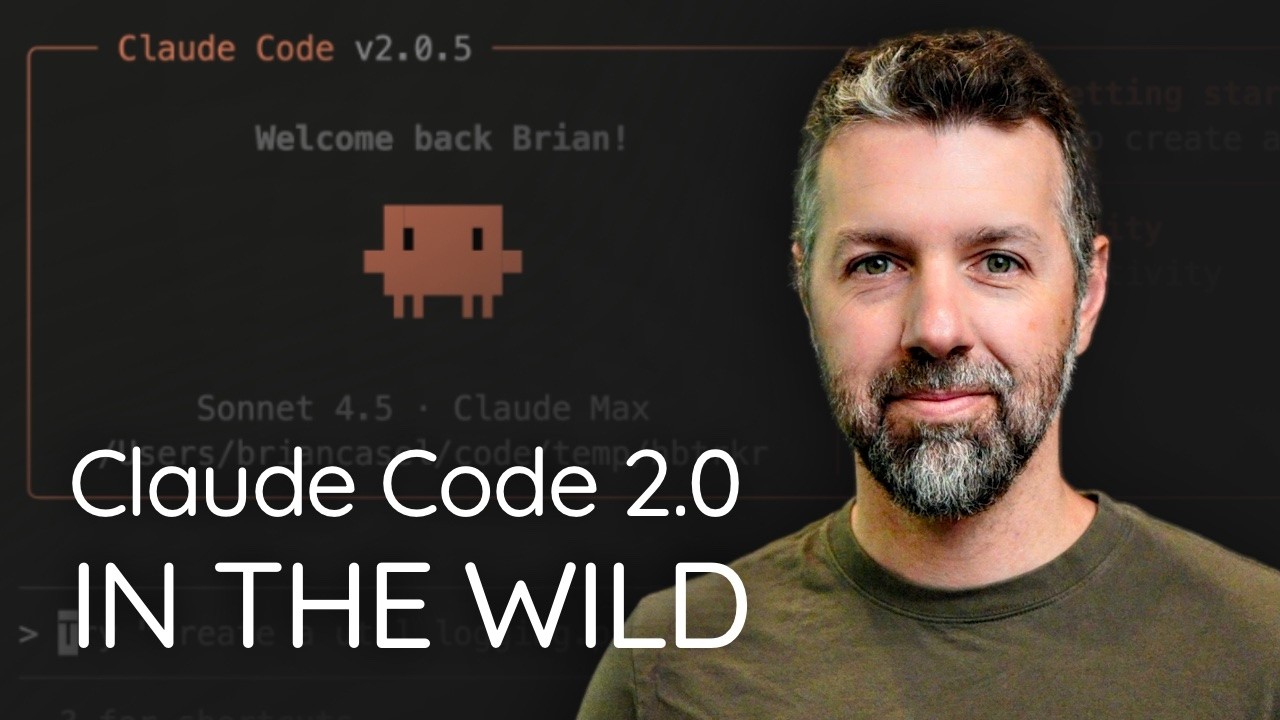The video reviews three practical new features in Claude Code 2.0—usage tracking, a rewind function for undoing AI-generated changes, and a prompt search shortcut—that enhance workflow efficiency and context management during coding sessions. It also highlights the faster Sonnet 4.5 model with adjustable thinking modes and the new VS Code extension, while noting current limitations like the lack of “dangerously accept permissions” support.
In this video, the creator shares their practical experience with the recent Claude Code 2.0 update, emphasizing the importance of real-world utility over hype when integrating AI coding tools into daily workflows. They highlight that while many AI models are impressive, what truly matters is how these tools perform during intense coding sessions. The video focuses on three new features in Claude Code 2.0 that the creator finds genuinely useful, alongside first impressions of the new Sonnet 4.5 model and the newly released VS Code extension.
The new Sonnet 4.5 model, which is the default in Claude Code 2.0.5, is praised for its speed and reliability. The creator notes that while all the latest AI coding models are quite advanced, Sonnet 4.5 stands out for being faster than its predecessor, Opus 4.1, especially with a new toggle feature that allows users to switch between “thinking on” (slower but more thoughtful) and “thinking off” (faster execution). This flexibility helps tailor the model’s performance to the complexity of the coding task at hand.
Claude Code’s new VS Code extension introduces a sidebar interface that offers a cleaner and more user-friendly way to interact with the AI compared to the terminal interface. However, the creator points out a current limitation: the extension does not support the “dangerously accept permissions” mode, which they prefer for smoother workflow without constant permission prompts. This limitation means they continue to use the terminal version for now but are hopeful for an update that will enable this feature in the extension.
Among the three standout features in Claude Code 2.0, the first is the new usage command, which provides clear visibility into how much of the weekly usage limits have been consumed across different models. This transparency helps users manage their AI usage more effectively, avoiding surprises and better planning their coding sessions. The second feature is the rewind function, which acts like an undo for both the conversation and the codebase, allowing users to revert to previous checkpoints. This is particularly useful for backtracking when AI-generated code changes don’t meet expectations, although it only rolls back changes made by Claude Code itself, not manual edits.
The third key feature is the ability to search through past prompts using a simple shortcut, which is invaluable for retrieving detailed instructions or long prompts from earlier in a conversation. This helps maintain continuity in long coding sessions and supports better context management by allowing users to compact conversations without losing important details. The creator emphasizes that managing context windows effectively is a crucial skill for professional developers working with AI, and these new features in Claude Code 2.0 significantly enhance that capability. Overall, the update aligns well with the creator’s AI-first development approach, making Claude Code an even more integral part of their daily coding workflow.
